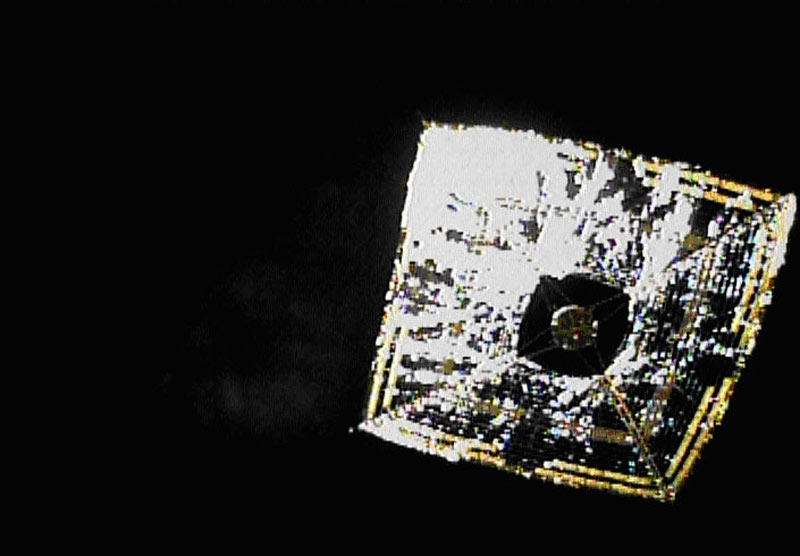Japan's Solar Sail Is the Toast of Space Science

NEW YORK ? Researchersfrom around the world are celebrating what they're calling a new dawn forspaceflight following the success of a Japanese craft propelled by a solarsail.
The JapanAerospace Exploration Agency spacecraft Ikaros,which launched in May alongside the Venus-bound orbiter Akatsuki, is the first vehicleto have deployed a solar sail and successfully rodethe sunlight in deep space.
Ikarosmission scientists and other researchers are discussing the state of solarsail propulsion this week at the second International Symposium on SolarSailing at the New York City College of Technology in Brooklyn. The three-daysymposium began Tuesday.
"Itshould have begun with a famous New York ticker-tape parade for our colleaguesfrom Japan who took us to this reality," said Louis Friedman, co-founder of the Planetary Society,in Pasadena, Calif., which has attempted to use solar sails and is preparingfor another mission.
Ikaros' solarsail, which was unfurled in June, has done more than just harness the power of thephotons striking its reflective surface. It has generated electricity from thethin film solar cells embedded in its membrane, a demonstration of a possiblepower source for future spacecraft.
A future spacesail mission potentially could use that power source to create a hybridpropulsion method that combines sailing with an ion-propulsion engine poweredby embedded solar cells, researchers said.
The Japan Aerospace Exploration Agency,or JAXA, sees Ikaros as a stepping-stone for a future solar sail mission toJupiter and the asteroids, according to JAXA program manager JunichiroKawaguchi. That mission could fly around 2019 or 2020, he added.
Get the Space.com Newsletter
Breaking space news, the latest updates on rocket launches, skywatching events and more!
Ikaros alsobriefly demonstrated a new attitude control system that relies upon sunlightalone to navigate, rather than using up fuel in thrusters to change direction.
The newsystem differs from merely tilting the sail to change the sunlight angle andpressure. Liquid crystal devices mounted on the edges of the sail use very lowamounts of electricity to turn on or off. The "on" setting leads to specular(or mirror-like) reflection that redirects sunlight in one focused direction,while the "off" setting leads to more-diffuse reflection that bouncessunlight off in all directions.
Thedifferent reflections created unequal forces of sunlight on the sail edges andallowed Ikaros handlers to demonstrate attitude control over the course ofalmost 24 hours, said Ryu Funase of the JAXA Space Exploration Center.
As Ikaros headstoward Venus, JAXA officials hope it eventually reaches the far side of the sun.
- Japan Aims for Venus, Part 2
- World's First Solar Sail Photographed in Deep Space
- How Do Solar Sails Work?
Join our Space Forums to keep talking space on the latest missions, night sky and more! And if you have a news tip, correction or comment, let us know at: community@space.com.
Jeremy Hsu is science writer based in New York City whose work has appeared in Scientific American, Discovery Magazine, Backchannel, Wired.com and IEEE Spectrum, among others. He joined the Space.com and Live Science teams in 2010 as a Senior Writer and is currently the Editor-in-Chief of Indicate Media. Jeremy studied history and sociology of science at the University of Pennsylvania, and earned a master's degree in journalism from the NYU Science, Health and Environmental Reporting Program. You can find Jeremy's latest project on Twitter.









